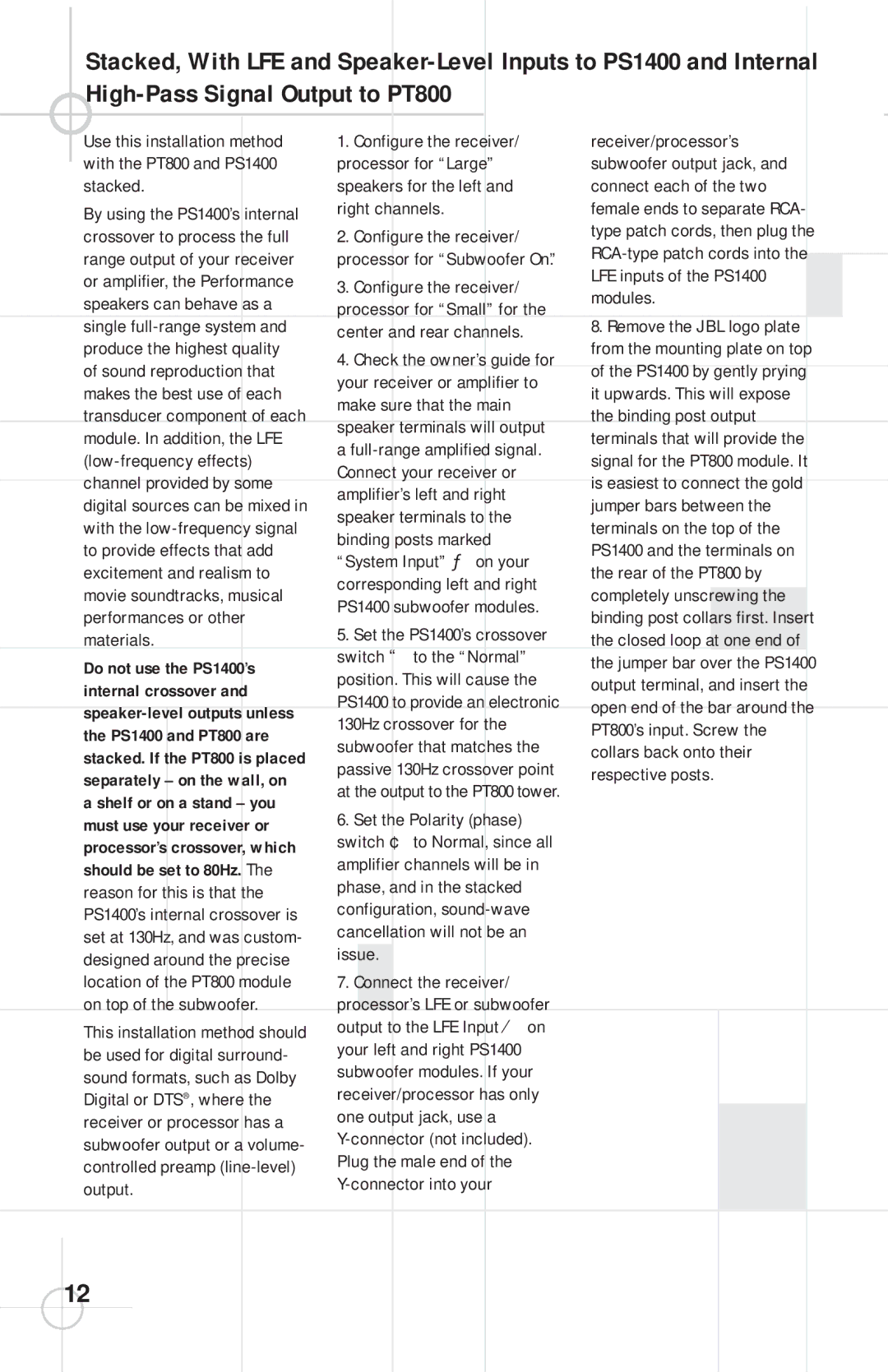PS1400 specifications
The JBL PS1400 is a powerful and versatile speaker that caters to a wide range of audio needs, making it an excellent choice for both professional and casual use. Known for its robust build and exceptional sound quality, the PS1400 stands out in the competitive audio landscape.One of the primary features of the JBL PS1400 is its impressive power handling capability. With a rated power output of 1400 watts, this speaker can easily fill large venues with clear, vibrant sound. The speaker is designed to handle high levels of audio without distortion, ensuring that music and vocal performances sound crisp and dynamic, even at high volumes.
The PS1400 utilizes JBL's advanced transducer technology, which enhances its sound reproduction. The speaker features a high-frequency compression driver that delivers pristine treble frequencies, providing clarity and detail that can be heard even in challenging acoustic environments. Additionally, the 14-inch woofer is engineered to produce rich bass tones, offering a well-balanced audio experience across the frequency spectrum. This dual driver setup allows for an impressive sound stage, making it suitable for live events, DJ performances, and studio monitoring.
Another notable aspect of the JBL PS1400 is its durable design. Built with high-quality materials, the speaker is engineered to withstand the rigors of both indoor and outdoor use. Its rugged enclosure protects against damage from physical impact and environmental conditions, while the integrated handles facilitate easy transport. Coupled with its professional-grade connectors, the PS1400 is designed for reliability in various settings.
In terms of connectivity, the JBL PS1400 features versatile input options, including XLR and TRS connectors, allowing seamless integration with different sound systems and equipment. This flexibility makes it ideal for use in diverse situations, from concerts to corporate events.
Overall, the JBL PS1400 combines power, quality, and durability, making it an exceptional choice for anyone looking to enhance their audio experience. With its advanced technologies and robust features, the PS1400 delivers a sound quality that is hard to match, ensuring that your music sounds its best, whether on stage or in the studio.

